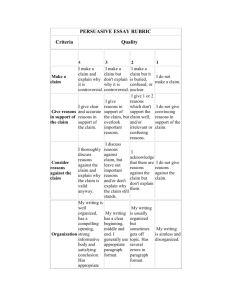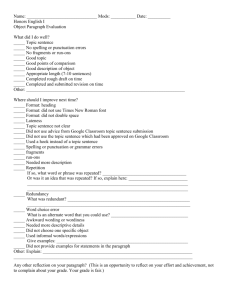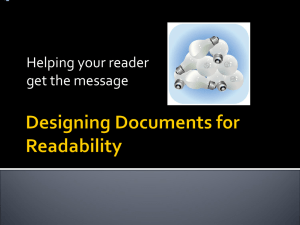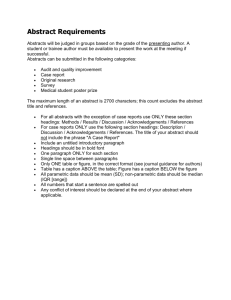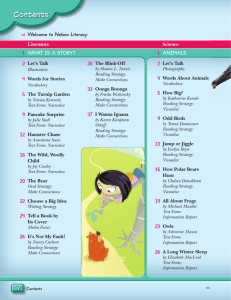The International Journal of Management Cases style guide
advertisement
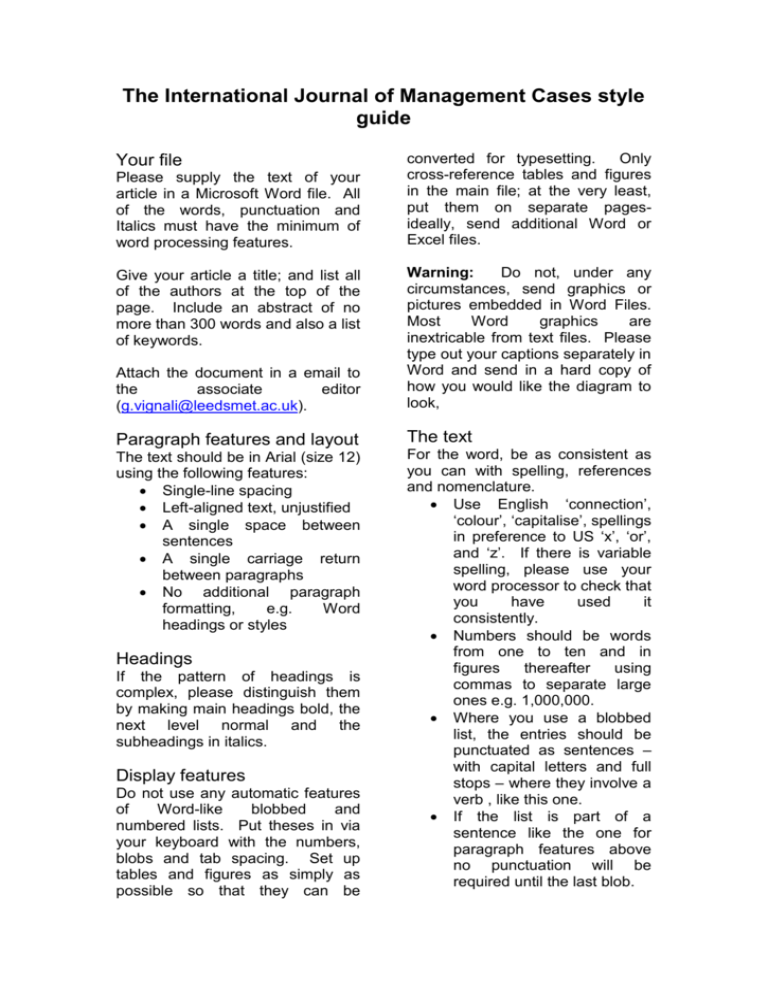
The International Journal of Management Cases style guide Your file Please supply the text of your article in a Microsoft Word file. All of the words, punctuation and Italics must have the minimum of word processing features. converted for typesetting. Only cross-reference tables and figures in the main file; at the very least, put them on separate pagesideally, send additional Word or Excel files. Attach the document in a email to the associate editor (g.vignali@leedsmet.ac.uk). Warning: Do not, under any circumstances, send graphics or pictures embedded in Word Files. Most Word graphics are inextricable from text files. Please type out your captions separately in Word and send in a hard copy of how you would like the diagram to look, Paragraph features and layout The text The text should be in Arial (size 12) using the following features: Single-line spacing Left-aligned text, unjustified A single space between sentences A single carriage return between paragraphs No additional paragraph formatting, e.g. Word headings or styles For the word, be as consistent as you can with spelling, references and nomenclature. Use English ‘connection’, ‘colour’, ‘capitalise’, spellings in preference to US ‘x’, ‘or’, and ‘z’. If there is variable spelling, please use your word processor to check that you have used it consistently. Numbers should be words from one to ten and in figures thereafter using commas to separate large ones e.g. 1,000,000. Where you use a blobbed list, the entries should be punctuated as sentences – with capital letters and full stops – where they involve a verb , like this one. If the list is part of a sentence like the one for paragraph features above no punctuation will be required until the last blob. Give your article a title; and list all of the authors at the top of the page. Include an abstract of no more than 300 words and also a list of keywords. Headings If the pattern of headings is complex, please distinguish them by making main headings bold, the next level normal and the subheadings in italics. Display features Do not use any automatic features of Word-like blobbed and numbered lists. Put theses in via your keyboard with the numbers, blobs and tab spacing. Set up tables and figures as simply as possible so that they can be Punctuation should be kept to a minimum and full stops only left for genuine abbreviations like e.g. or ibid. (n.b. there is no extra space) For references please see below. Capitalisation of initial letters should also be kept to a minimum. Only dignify titles with capitals where a specific managing director, professor or senior lecturer is mentioned. The initial letters of proper names and titles of books and magazines are capitalised; the titles of articles and the headings in your article will not be. Do not capitalise the internet. Only the initial letter of the first word of a heading or the article title should be capitalised – follow the style of this page. No full stops at the end of headings. Spell out the contents of the acronym in brackets after it; the International Journal of Management Cases (IJMC). For subsequent references, DSA is fine. Use en dashes – like these – without space for parenthesis. Don’t worry if you cannot find these on your machine, they can be put in later. All number series, particularly page references to articles in endnotes, should be separated by an en dash without space: e.g. pp 228 – 412. Use single ‘smart’ (i.e. curly) quotes for all quotations and inverted commas, except where there is a quotation inside a quotation, then use double ones. Use conventional abbreviations for quantities, without spaces between the number and the measure: so £10m, 35% or 25kg, and no extra full stops are required. Show percentages as a figure (35%) rather than spelling it out (per cent). References The list of books, articles and sources referred to is placed at the end of the article. It is important that the Harvard referencing system is adopted. Note: The handling of author initials Of multiple authors if there are no more than three use et al (no full stops) Book and journal article titles receive contrasting treatment There is no full stop with p or pp An en dash between the page numbers with no full stop at the end Also, US spelling conventions are observed in the spelling of US references, following the original. Pictures Please send pictures as separate email attachments. Colour or greyscale jpegs are fine, but they must be at least 300dpi in quality, and larger than you expect them to be reproduced. If you are a guest editor we would like to publish your picture with your editorial and this photo must be no more than 4cm square. Procedures Copyright When an article is accepted for IJMC the publishers will wish you to assign them the exclusive copyright and you will be sent an assignment form. The author(s) may use the material with appropriate acknowledgement in their other works. Permissions Copyright material, including others’ unpublished work, must not be used without written permission of the author and the publisher and it is the responsibility of the author(s) of the articles to ensure that this is obtained and shown to the publisher of IJMC. Author’s copies Authors are entitled to one copy of the issue in which their article appears and these will be forwarded by the publishers as soon as they are available.


